Ground Support

Matt Shanley is committed to bringing stability to your home or business. With his company, Alpha Foundation Specialists, based in Tallahassee, Fla., his crews bring new strength and support to buildings that are falling into foundation settlement problems. Using track loaders and mini excavators, the company shows up to a problem structure and installs innovative helical piers and piles around a slumping foundation, lifting both the building and the client’s good spirits.
“We don’t leave jobs till we know a customer is happy,” says Shanley. “We always want to make sure we’re achieving their needs, so whenever we get on a site, the first question we ask is: ‘What are you trying to accomplish?’ Some people want to lift the home to a perfectly level position and some people just want to stabilize it and prevent it from getting any worse. It’s about making the client aware of the problem. There’s no sense in doing excess work if it’s not necessary or it could possibly fail.”
Alpha Foundation Specialists has been achieving customer’s needs since 2002, when Shanley dropped out
of college to start the fledgling foundation repair business. While studying geotechnical engineering at Tallahassee Community College, Shanley ran into a supplier of helical anchors at a party one night.
Together, they discussed how these unique tools help stabilize settling homes and how north Florida needed a contractor that specialized in helical support and installation applications.
They talked about how unstable soils can settle when a foundation is subjected to moisture, drought or poor drainage — especially in the sinking, swelling soils of Florida. “In this area, we have something commonly called pipe clay — it’s an expansive soil — when it gets wet, it swells and when it gets dry it contracts,” explains Shanley. A permanent solution to sinking foundations, especially in expansive soils, is helical piers, which transfer the load of the foundation from the failing soil to the steel pier.
“Coming from a family who owned a geotechnical engineering firm [Alpha Geotechnical and Testing Services, based in Tallahassee], I knew we had run into those foundation types of problems all the time,” says Shanley. “We’d hire someone out of Jacksonville or Orlando or somewhere farther away, and the prices they were charging were pretty astronomical. So I wanted to take a risk, and I just moved on it. I haven’t looked back since.”
Today Alpha Foundation Specialists is a full-service foundation repair company focused on helical pier systems in residential, commercial and industrial markets. For nearly 10 years, the company has completed hundreds of residential and commercial foundation repairs, grossing a little over $1 million dollars a year right now. Alpha is a certified installer of the Foundation Supportworks Inc. line of galvanized steel foundation piers (commonly called helical piers, piles and anchors).
“If you’re working with it in tension or pulling on it, it’s a helical anchor,” says Shanley. “If you’re working with it purely on compression, it’s a helical pile. If you’re working in either application, it’s a helical pier.” Digging, installing and jacking up the piers, Alpha crews can raise a building to the perfect balance, guaranteeing a foundation’s longevity for over 100 years.
Drill, Jack, Lift
Running two three-person crews, Alpha Foundation Specialists works on homes and commercial structures that can range from giant parking garage repairs to simple, residential fireplace reconstruction (jobs that range from $3,000 to $300,000). Crews run all over north Florida and southern Georgia to complete projects — places like Pensacola, Tallahassee, Panama City, Quincy, Monticello, Perry, Live Oak, Jasper, Jacksonville, Lake City, Bainbridge, Cottonwood and Valdosta. Since the company is constantly mobile and helical piers are installed around already-built structures, Alpha crews rely on compact equipment to complete projects.
Today, the company utilizes three Bobcat tool carriers to install its helical pier systems: a Bobcat E35 compact excavator; Bobcat 323 compact excavator; and a Bobcat T300 compact track loader. Wielding attachments like augers and buckets, these three units can dig, install and clean up the site with minimal construction and restoration.
“We typically drill with the E35 Bobcat,” says Shanley. “We also have the Bobcat 323 mini excavator for very tight applications because it has the ability to retract the tracks underneath it, so we can get into gates, openings and doorways that are less than 38 in. wide. In larger commercial applications, we use a Bobcat T300 with high flow for installing lots of piles. We have a custom boom we’ve made for all of them. We have a drive head on the end of the booms that has the ability to twist the piles down.”
On a typical project, there is a foreman running the three-person crew; he’s also the equipment operator, running the lifting and drilling procedures. The other two crewmembers are working on the undermining and hanging of the brackets and the bolting of connections. The first thing the installers do is dig around the foundation, placing brackets beneath the footings of the home. Then, the helical piers are driven into the ground at the base of the foundation, using an excavator or track loader with an auger. The piers are driven through the shallow, unsafe surface soils to deeper, more stable soil at least 14 ft deep (noting some have gone as deep as 190 ft). Sections are added as the pier is driven into the ground. Each pier is then capped with a load-bearing bracket. Once installed, the contractor can lift the structure back into a level position.
“Once the pile’s installed to the necessary depth and capacity, we attach a bracket to the foundation that makes a connection between the pile and the foundation,” says Shanley. “Then that bracket has the potential to force down on the pile, since the pile has a greater strength than the foundation. For every reaction there is an equal and opposite reaction, which is why the foundation lifts up.”
During the installation, the equipment gives live feedback on the amount of torque that it’s taking to install the pile; the amount of torque installed relates to an actual capacity for the pile. For every 1,000 ft-lbs of torque installed on a standard pile, the crew attains 9,000 lbs of ultimate capacity. For a residential application, crews will typically install them to about 14,000 ft-lbs of torque, which would equal 36,000 lbs of capacity that one pile is capable of supporting.
The crew predetermines how much the foundation has settled beforehand by running level and elevation surveys inside. They can also come inside during the lifting procedure to see how much more they want to lift.
“Sometimes we don’t want to lift it all the way to the 100 percent level because you end up causing more damage when there’s such a great amount of settlement,” says Shanley.
Of course understanding the diversity of soils in Florida and Georgia is paramount to each unique project’s success.
“We have to know what the soil conditions are and have the ability to drill through anything,” says Shanley. “Some of it is a learning process, but a lot of it has to do with soil testing. Soil tests can be very valuable in our line of work.”
Supporting a Growing Business
Because foundation problems are often difficult for home and business owners to assess, education has been a key to Alpha Foundation’s success. Cracks in stucco, fissures in brick and exterior finishes, sticking doors, leaning chimneys and jamming windows are all signs of foundation settlement.
“A big part of it is just knowing that there is a problem and being able to market to people so that they know they have a problem,” says Shanley. “That was the biggest problem we faced. Typically, the common thought process is that all homes have a little settlement, so go back in and patch the cracks and they’ll be ok. The problem is you can go back and patch the cracks over and over again, but you’re never really stopping the problem. You’re just putting a Band-Aid over a wound.”
While the company relies a lot on word of mouth recommendations, Alpha Foundation Specialists also advertises in the Yellow Pages and on radio and television to generate new customers. Visit its website at www.foundationrepairnorthflorida.com and you can watch videos and read testimonials on the helical pier process. The company also constantly talks to local engineers, architects and contractors to keep open lines of communication for potential clients. The forum of contacts seems to be working.
“Right now, it’s been as good as we’ve ever seen it,” says Shanley. “We’re typically booked up three to four weeks in advance.”
Length of a project really depends on the size. On a fireplace project, there might be two or three piers and crews can finish it in a matter of half a day. On a bigger commercial job or large home project (like houses with sinkholes), the job may require 100 to 200 piers and may take as long as three weeks to a month to complete. The science and art of installing helical pier systems is a complex application, but it certainly makes an interesting addition to a contractor’s portfolio. First, professionals will need to investigate all the helical pier system suppliers on the market, get certified, find the right equipment for installation and learn local soil challenges.
“The certification process is usually through whoever the distributor of the product is, but depending on whatever state or county you’re in, a typical contractor’s course and license is required as well, to pull the permits to perform these repairs,” says Shanley. “If you’re going to get into it, first get a contractor’s license so you have the ability to pull the permits. Secondly, get a thorough study and background of soil conditions in all your surrounding areas, so you know what concerns are common.”
Keith Gribbins is managing editor of Compact Equipment, based in Peninsula, Ohio.

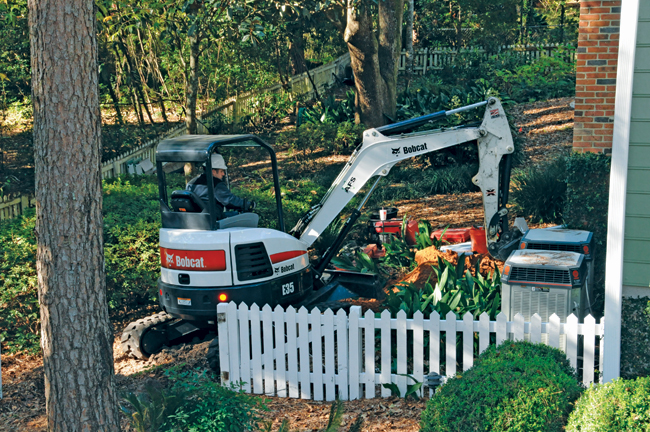
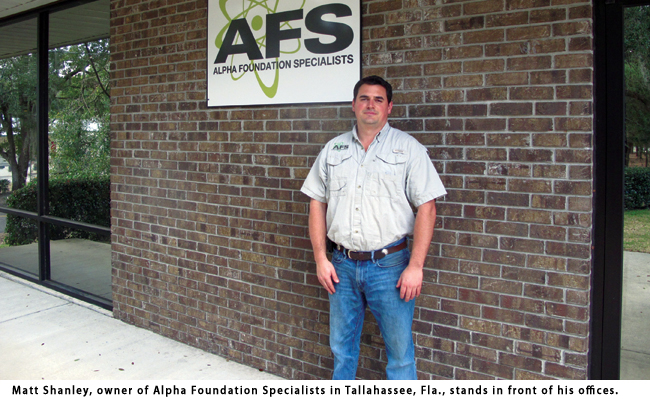
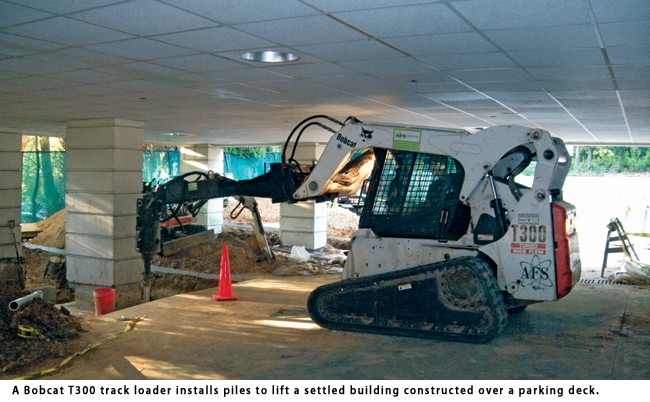
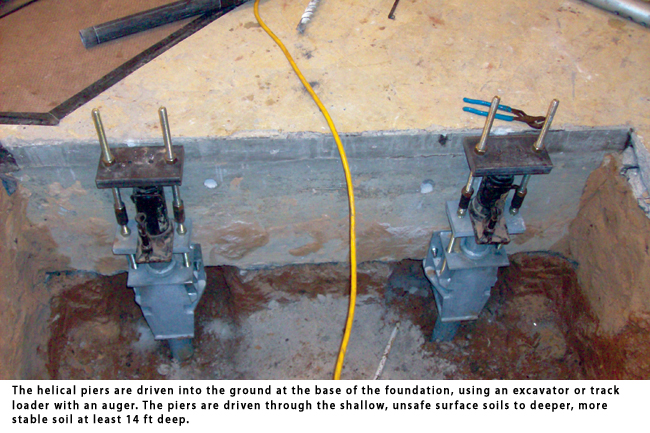
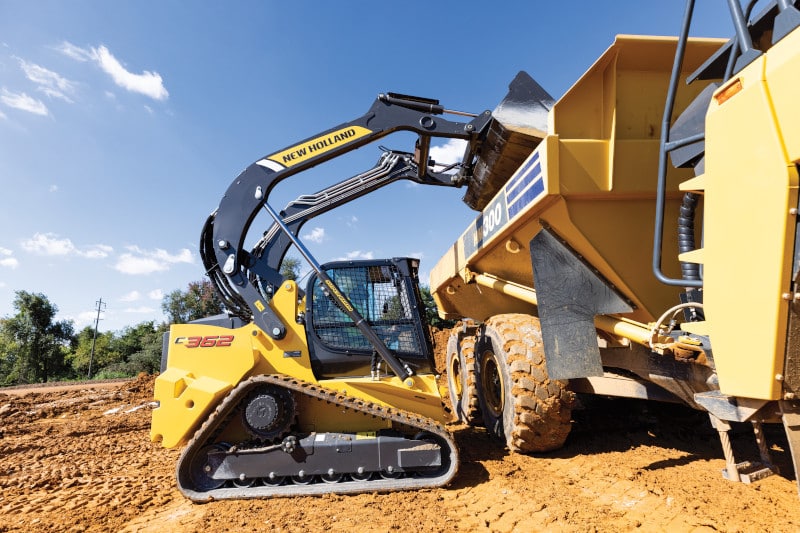



Comments are closed here.